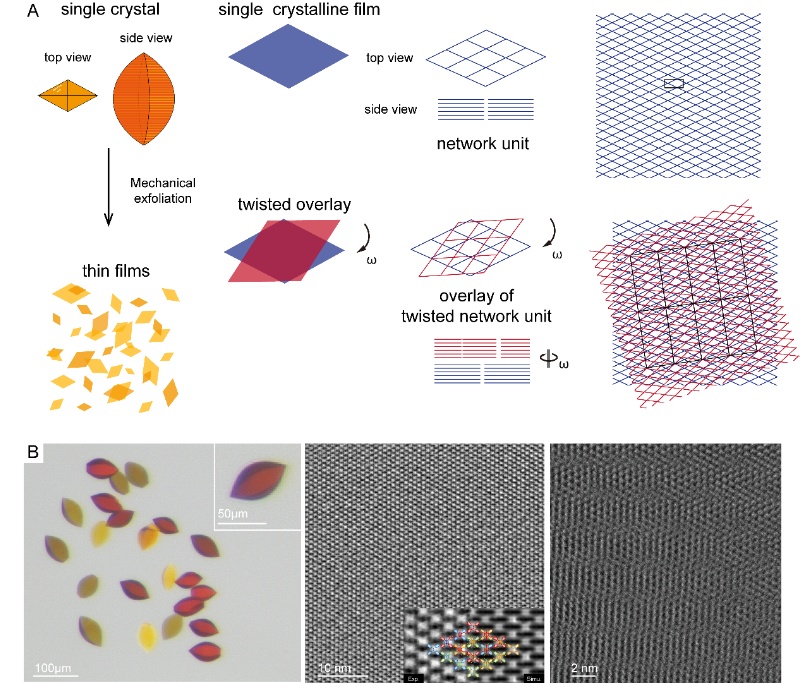Recently, the Journal of the American Chemical Society (JACS) published online an article on two-dimensional covalent organic frameworks (2D COFs) single crystals and their exfoliation to form moiré superlattice, led by Prof Hexiang Deng at the College of Chemistry and Molecular Sciences (CCMS), Wuhan University. The title of his work is “Moiré Patterns of Two-Dimensional Covalent Organic Framework Single Crystals Created by Superstacking”, with Lezhi Yi, a Master's student (class of 2021) at CCMS, as the first author.
Moiré superlattices, typically created by twisting and stacking inorganic 2D crystals like graphene or transition metal dichalcogenides, have revealed attractive novel physical and chemical properties, suited for electronic device fabrication. However, the construction of Moiré superlattices remains challenging for organic 2D crystals based on molecular building blocks, such as COFs. In this work, the research team obtained large 2D COF single crystals (COF-400) up to 50 μm in size (Figure 1), enabling single-crystal X-ray diffraction structure determination with a resolution up to 0.75 Å. Through chemical-mechanical exfoliation, large-area, high-quality 2D COF single-crystal thin films were obtained. This allowed for the formation of moiré superlattices with various twist angles (ranging from 6.4° to 69.7°), unveiled by transmission electron microscopy with sub-angstrom resolution (0.95 Å).
The preparation of large-sized 2D COF single crystals was key to achieving the moiré superlattice. Large 2D COF single crystals not only provide large-area, high-quality films, but also allows for structure determination with atomic accuracy, standing as new tools for the fabrication of organic electronics.
The authors of the paper include PhD candidates Yijun Gao, Chunxing Yan, Shuming Luo, and Tianyu Wang, from Wuhan University, as well as Professor Lingmei Liu, and PhD candidate Ying Liu, from Chongqing University. The research received support from the National Key R&D Program of China and the National Natural Science Foundation of China. The Wuhan University Research Public Service Platform, the Large-Scale Instrument Sharing Platform of the College of Chemistry and Molecular Sciences, and the Shanghai Synchrotron Radiation Facility (SSRF) provided support for this work.
Link to the paper: https://pubs.acs.org/doi/10.1021/jacs.5c11049

Fig.1 (A) Illustration for the moiré pattens of COF-400; (B) The optical image of large COF-400 single crystals, the corresponding STEM image of the COF films and TEM image of moiré superlattice.